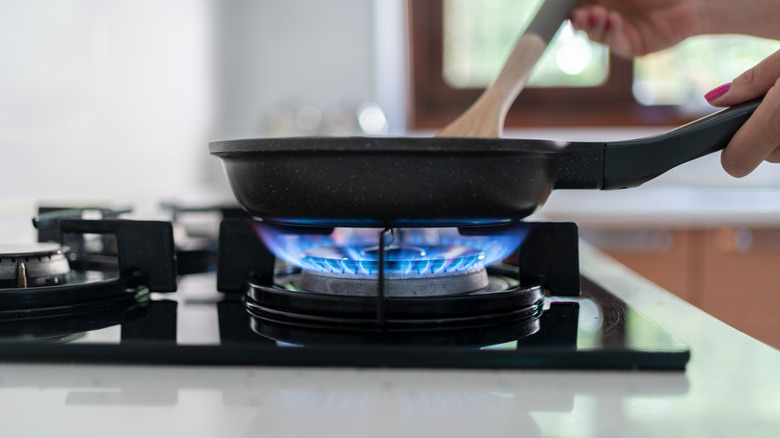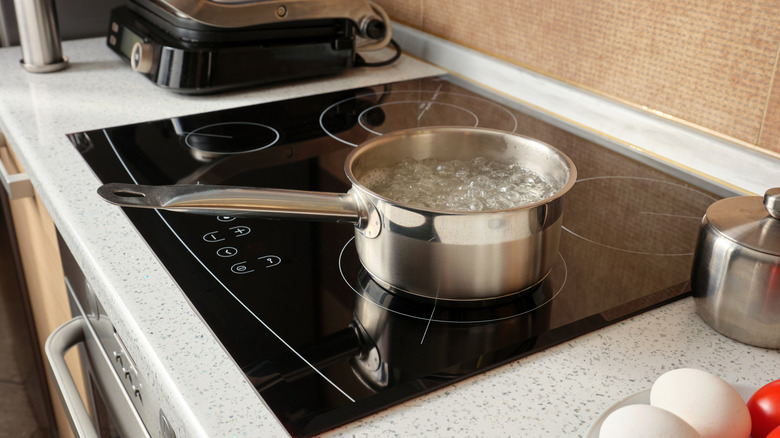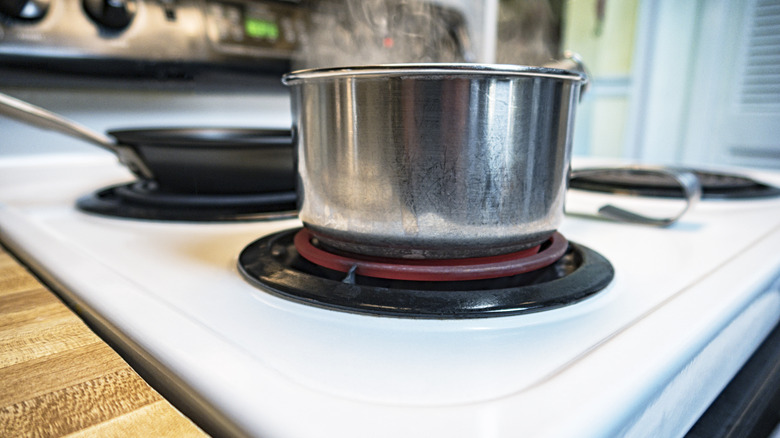Why You May Start Seeing Less Gas Ranges In Kitchens In 2026
In 2026, expect to see an interior design shift toward more eco-friendly and modern amenities. For your kitchen, this could include sleek wood cabinetry, natural stone tiles, or an influx of organic, biophilic design elements. However, it's not just style choices that are changing. Homeowners are craving current tech and advancements in their cooktops or workstations. Therefore, the traditional gas stove of yesteryear is being replaced and the cooktop trend that's making kitchens safer and more efficient in 2026 is the electric range.
Many homeowners favor electric stovetops because they are easier to clean, more energy efficient, and provide more precise temperature control. The electric stovetops also adhere to interior design preferences as folks prefer minimalist and sleek setups. However, this is not just a functional or aesthetic switch. According to experts, there are environmental and health concerns related to using a gas range, making electric a safer option. And when it comes to cost, prices will vary. If you are making the switch from gas to electric, costs will be higher than if you are simply upgrading pre-existing electric units. If you choose an electric range, coils will be the most affordable, while induction surfaces, particularly invisible cooktops, will be more expensive to install.
Gas ranges are out, electric ranges are the new must-have
To understand this new trend, it's important to note the difference between gas and electric ranges. Gas cooktops use a gas line hookup to operate, producing an open flame on the burner when in use. Many professional chefs prefer this type due to heat control, instant response to temperature changes, greater pan compatibility, and visual feedback. However, gas stoves can be a hassle to clean and maintain. On the other hand, electric stovetops use electricity to function. There are several different varieties, though induction cooktops with a smooth ceramic-glass surface are most popular. They're preferred among homeowners for their looks and ease of cleaning.
Many people are making the switch in 2026 from gas to electric for a variety of reasons, including health and safety. Gas stoves produce nitrogen dioxide from the burning of natural gas, which can cause air pollutants and respiratory problems. Legislation has also impacted buyers and manufacturers by encouraging the swap from gas to electric in some areas, with total bans also being discussed. However, if you have an existing gas range and are considering a swap, there is a costly downside of switching from a gas to induction stove you should consider, which is exchanging the gas line for a steady electrical power supply that could require rewiring.
Types of electric cooktops and ranges
If you decide to make the change from a gas to electric range, there are a few different types to choose from. The three most notable include coil, radiant, and induction. Coil cooktops have exposed metal heating elements shaped like coils. While budget-friendly and durable, coils do not distribute heat evenly and they present a challenge to clean. However, if the heating element goes out on one burner, you can replace the coil more easily than you could on a smooth-top range. Radiant heating uses coils beneath a smooth ceramic or glass flat top surface. The coils heat up the surface, radiating that heat along the cooktop. This option is affordable, easy to clean, and compatible with most cookware. But be aware that surface heating can make the entire range hot, creating a burn hazard. It is also not as energy efficient as an induction range.
Because of their speed, heat control, and energy efficiency, induction ranges have become quite popular. They use electromagnetic fields to direct heat to the cookware. However, these cooktops are not compatible with all pots and pans, as your cookware needs a metal base for the induction range to function properly. Another option is the invisible cooktop, which is designed to meet the needs of small kitchens. Invisible cooktops work like induction ranges, using electromagnetic fields to heat pans with a metal base. They are integrated into countertops for a seamless look and only heat the pan placed on top.


